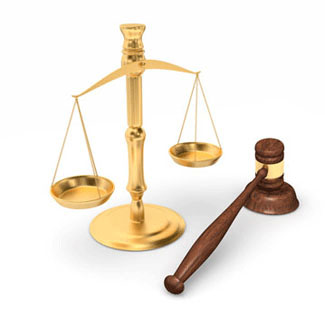
Internal Memos Are The Key To Johnson's Baby Powder Asbestos Negligence
In the end, Johnson & Johnson's own words may be their undoing in talcum powder asbestos trials
Tuesday, November 17, 2020 - Most cases decided in favor of plaintiffs suing Johnson & Johnson, alleging that Johnson's Baby Powder contains asbestos, a known carcinogen, have used the company's own words against them in court. Internal documents unsealed in court have produced testimony that indicates executives at the company knew that they had an asbestos problem as far back as 1971. One such bellwether case was won by 45-year-old Stephen Lanzo who suffers from mesothelioma, a rare but deadly form of cancer of the lining of the lungs. Lanzo was awarded a total of $117 million in compensatory and punitive damages. Johnson & Johnson was forced to pay 70% of the total damages award while Imerys, the supplier of the raw talc, was allocated 30% of the responsibility. Imerys Inc., Johnson & Johnson's sole supplier of talc, was forced into bankruptcy over the verdict and thousands of similar accusations. The company recently emerged from receivership by selling its North American talc mining operations to an industrial company that uses talc in steel production for more than $200 million. The proceeds of the sale are to go into a trust to pay talc asbestos and mesothelioma victims in claims where Imery's is named as a co-defendant. Talcum powder cancer lawsuits are handled by top national attorneys and offer a free no obligation consultation.
Lanzo's attorney argued that Johnson & Johnson's internal memos predicted that lifelong users of Johnson's Baby Powder could get sick with a life-threatening condition related to talc, asbestos, and other elongated fibers. According to Kazan Law.com, "In 1974, the Manager of Research & Development in Johnson & Johnson's talc mining subsidiary wrote a confidential report that fibrous anthophyllite and fibrous amphibole minerals and chrysotile asbestos in Johnson & Johnson's Vermont talc supply presented a severe health hazard." An in-depth Reuters investigation titled "Johnson & Johnson knew for decades that asbestos lurked in its Baby Powder" looked at the documents to try and determine what the company knew and when they knew it. Reuters reported, "The earliest mentions of tainted J&J talc that Reuters found come from 1957 and 1958 reports by a consulting lab. They describe contaminants in talc from J&J's Italian supplier as fibrous and "acicular," or needle-like, tremolite. That's one of the six minerals that in their naturally occurring fibrous form are classified as asbestos." Johnson & Johnson has produced all their documents about asbestos in their baby powder talc supply, and thousands of plaintiffs are using the data against Johnson & Johnson in court. "J&J has been compelled to share thousands of pages of company memos, internal reports and other confidential documents with lawyers for some of the 11,700 plaintiffs now claiming that the company's talc caused their cancers - including thousands of women with ovarian cancer," according to Reuters.
Johnson & Johnson recently settle a block of 1000 lawsuits against them brought against them by women alleging their regular, life-long use of Johnson's Baby Powder caused them to develop ovarian cancer, for $100 million. There are over 20,000 cases against Johnson & Johnson by plaintiffs that allege the company failed to warn consumers of what they knew or had an obligation to know about the health hazards of talc.
 OnderLaw, LLC -
OnderLaw, LLC -